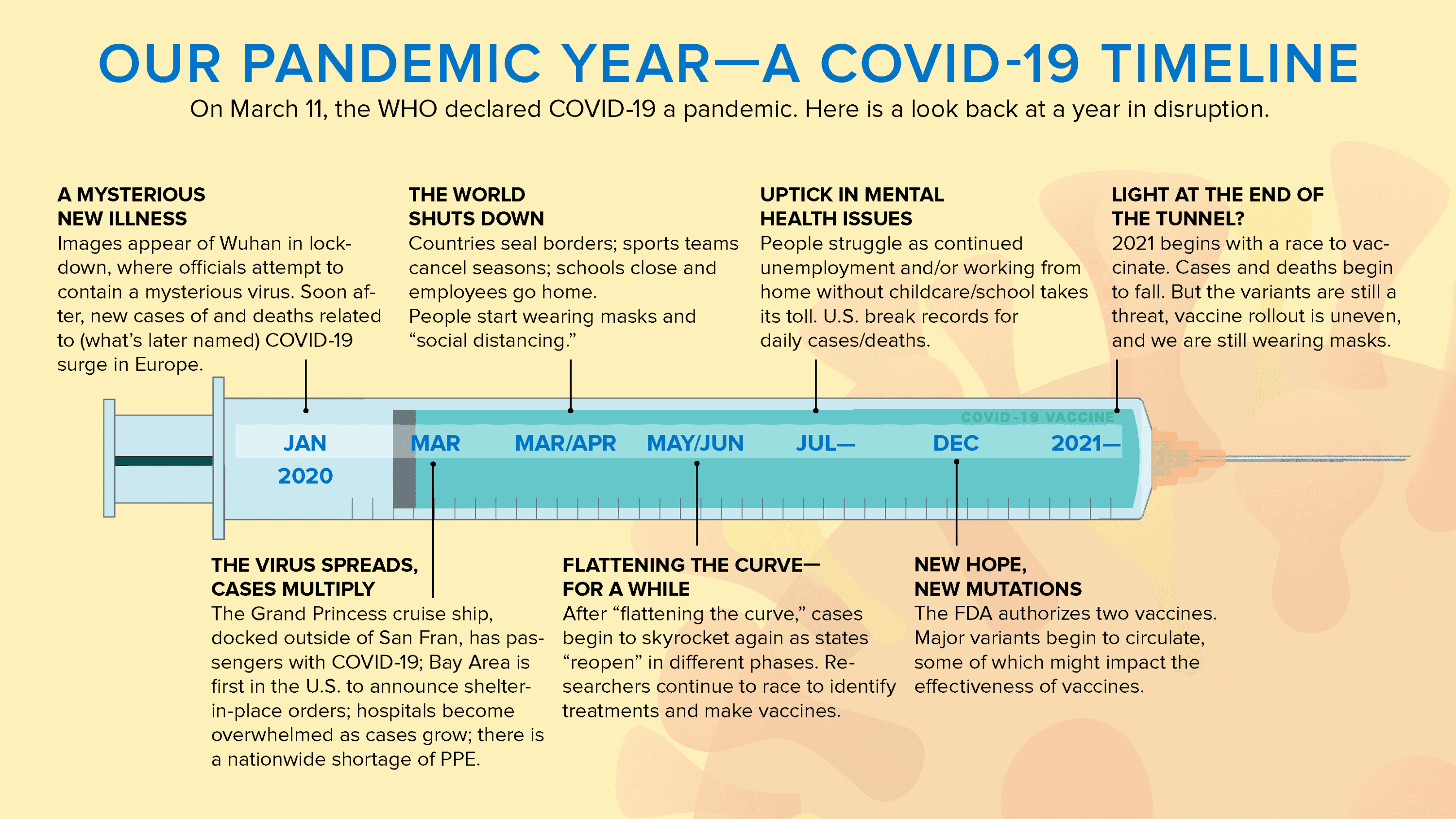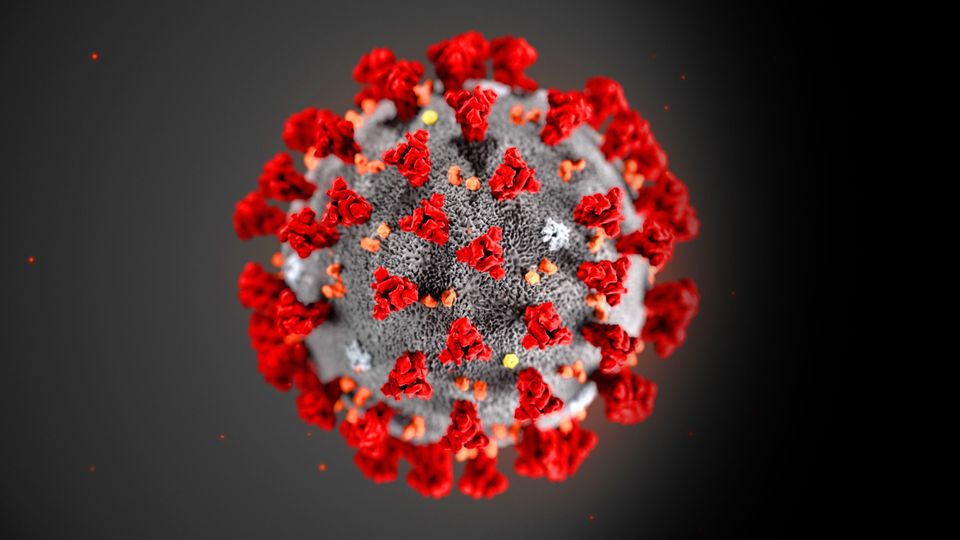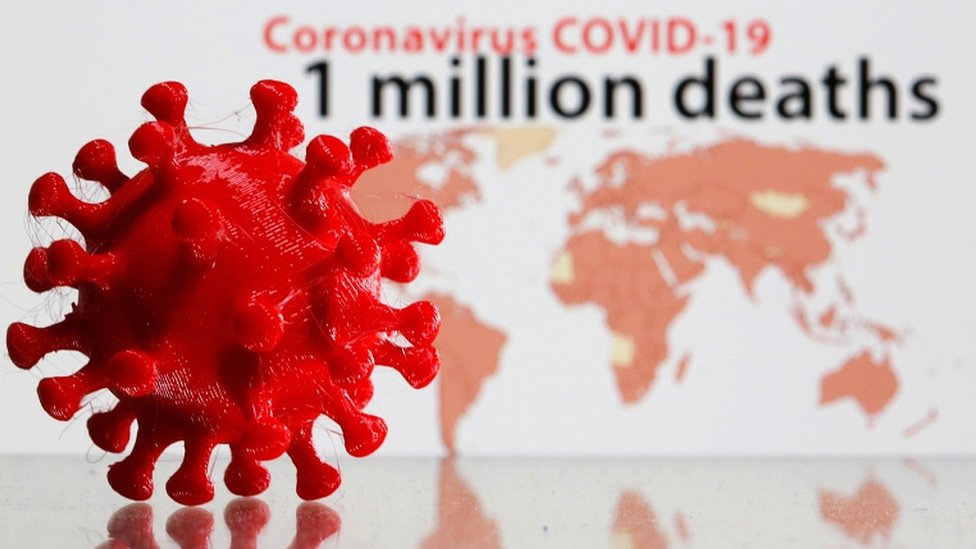The Curious Origins Of The Coronavirus Pandemic: Unraveling Its Mysterious Beginnings
Where did the coronavirus pandemic start? The COVID-19 pandemic, caused by the SARS-CoV-2 virus, emerged in the city of Wuhan, in the Hubei province of China, in December 2019.
The virus is thought to have originated in bats and was transmitted to humans through an intermediary animal, possibly the pangolin. The first cases of the virus were reported in Wuhan in December 2019, and the virus quickly spread to other parts of China and the world.
The COVID-19 pandemic has had a profound impact on the world. It has caused widespread illness and death, disrupted economies, and led to social and political upheaval. The pandemic is still ongoing, and its full impact is not yet known.
Understanding the origins of the COVID-19 pandemic is important for preventing future pandemics. By learning how the virus emerged and spread, we can develop better strategies for detecting and containing new viruses.
Where Did the Coronavirus Pandemic Start?
The COVID-19 pandemic, caused by the SARS-CoV-2 virus, emerged in the city of Wuhan, in the Hubei province of China, in December 2019. Understanding the origins of the COVID-19 pandemic is important for preventing future pandemics.
- Location: Wuhan, Hubei province, China
- Time: December 2019
- Origin: Bats
- Intermediary animal: Possibly the pangolin
- First cases: Reported in Wuhan in December 2019
- Spread: Quickly spread to other parts of China and the world
- Impact: Widespread illness and death, disrupted economies, and led to social and political upheaval
The COVID-19 pandemic is still ongoing, and its full impact is not yet known. However, by understanding the origins of the pandemic, we can develop better strategies for detecting and containing new viruses.
Location
The COVID-19 pandemic is thought to have started in the city of Wuhan, in the Hubei province of China. There are several reasons why this location is significant.
- Wuhan is a major transportation hub. The city is home to Wuhan Tianhe International Airport, one of the busiest airports in China. This means that Wuhan is well-connected to other parts of China and the world, making it easy for the virus to spread.
- Wuhan is a densely populated city. With a population of over 11 million people, Wuhan is one of the most populous cities in China. This means that there are a lot of people living in close proximity to each other, which can make it easier for the virus to spread.
- Wuhan is home to a number of live animal markets. These markets sell a variety of animals, including bats, pangolins, and snakes. These animals are often kept in close quarters, which can create the ideal conditions for viruses to spread.
- Wuhan is located in a region of China that is known for its high levels of air pollution. Air pollution can damage the lungs, making people more susceptible to respiratory infections.
All of these factors likely contributed to the emergence of the COVID-19 pandemic in Wuhan. The city's location, population density, and live animal markets made it an ideal breeding ground for the virus.
Time
The COVID-19 pandemic is thought to have started in December 2019. This timing is significant for several reasons.
- The flu season. December is the start of the flu season in China. This means that there were already a lot of people sick with respiratory illnesses, which may have made it easier for the coronavirus to spread.
- The Lunar New Year. The Lunar New Year is a major holiday in China. Millions of people travel during this time, which may have helped to spread the virus to other parts of the country and the world.
- The weather. December is a cold and dry month in Wuhan. This type of weather can make it easier for respiratory viruses to spread.
All of these factors likely contributed to the emergence of the COVID-19 pandemic in December 2019. The timing of the pandemic was not a coincidence. It was a combination of factors that made it more likely for the virus to spread.
Origin
The connection between "Origin: Bats" and "where did the coronavirus pandemic start" is significant because bats are the natural reservoir for many coronaviruses. Coronaviruses are a large family of viruses that can cause illnesses in both animals and humans. In humans, coronaviruses can cause respiratory illnesses, such as the common cold, Middle East Respiratory Syndrome (MERS), and Severe Acute Respiratory Syndrome (SARS).
The SARS-CoV-2 virus, which causes COVID-19, is thought to have originated in bats. The virus is closely related to a bat coronavirus called RaTG13. RaTG13 was discovered in horseshoe bats in Yunnan, China, in 2013. Scientists believe that SARS-CoV-2 may have evolved from RaTG13 or a similar bat coronavirus.
It is not yet known how the SARS-CoV-2 virus jumped from bats to humans. However, there are several possible scenarios.
- Direct transmission: The virus may have jumped directly from bats to humans through contact with bat saliva, urine, or feces.
- Indirect transmission: The virus may have jumped from bats to humans through an intermediary animal, such as a pangolin.
Understanding the origin of the SARS-CoV-2 virus is important for preventing future pandemics. By learning how the virus emerged and spread, we can develop better strategies for detecting and containing new viruses.
Intermediary animal
The pangolin is a possible intermediary animal in the transmission of the SARS-CoV-2 virus from bats to humans. Pangolins are scaly, anteater-like mammals that are found in Asia and Africa. They are often hunted for their scales, which are used in traditional Chinese medicine.
- Pangolins are known to carry coronaviruses. In 2019, a study found that pangolins in China were carrying a coronavirus that was 99% identical to the SARS-CoV-2 virus.
- Pangolins are often sold in live animal markets. Live animal markets are known to be a source of zoonotic diseases, which are diseases that can be transmitted from animals to humans.
- Pangolins are hunted and consumed in some parts of the world. Eating raw or undercooked animal products can increase the risk of zoonotic disease transmission.
The connection between pangolins and the COVID-19 pandemic is still being investigated. However, the evidence suggests that pangolins may have played a role in the transmission of the virus from bats to humans.
First cases
The first cases of COVID-19 were reported in Wuhan, China, in December 2019. This is significant because it provides a starting point for understanding where and when the pandemic began. By studying the early cases, researchers can gain insights into the origin of the virus and how it spread.
The first cases of COVID-19 were initially thought to be linked to a seafood market in Wuhan. However, subsequent research has suggested that the virus may have been circulating in Wuhan for some time before the first cases were reported. This is because the early cases had no connection to the seafood market, and some people who tested positive for the virus had no symptoms.
The identification of the first cases of COVID-19 in Wuhan is important for several reasons. First, it provides a baseline for understanding the spread of the virus. By studying the early cases, researchers can track how the virus spread from Wuhan to other parts of China and the world.
Second, the identification of the first cases of COVID-19 in Wuhan has helped researchers to understand the clinical presentation of the disease. By studying the early cases, researchers have been able to identify the most common symptoms of COVID-19 and develop diagnostic criteria for the disease.
Spread
The rapid spread of the SARS-CoV-2 virus from Wuhan to other parts of China and the world is a significant aspect of the COVID-19 pandemic. Understanding how and why the virus spread so quickly can help us prevent future pandemics.
- Air travel: Air travel played a major role in the spread of the virus. Infected people traveled from Wuhan to other cities in China and abroad, carrying the virus with them.
- Lack of early detection and containment: In the early stages of the pandemic, the Chinese government was slow to recognize the severity of the virus and to implement containment measures. This allowed the virus to spread unchecked.
- Asymptomatic transmission: One of the unique characteristics of the SARS-CoV-2 virus is that it can be transmitted by people who do not have symptoms. This made it difficult to track and contain the virus.
- Global interconnectedness: The modern world is highly interconnected, with people and goods traveling across borders on a regular basis. This made it easy for the virus to spread from China to other parts of the world.
The rapid spread of the SARS-CoV-2 virus is a reminder of how interconnected our world is and how important it is to be prepared for future pandemics.
Impact
The COVID-19 pandemic has had a devastating impact on the world. The virus has caused widespread illness and death, disrupted economies, and led to social and political upheaval. The connection between this impact and the origin of the pandemic in Wuhan, China, is significant.
The outbreak of the virus in Wuhan led to a lockdown of the city and surrounding areas. This lockdown had a ripple effect on the Chinese economy and beyond. Factories were closed, supply chains were disrupted, and businesses were forced to close their doors. The economic impact of the pandemic is still being felt around the world.
The social and political impact of the pandemic has also been significant. The lockdown measures have led to social isolation and loneliness. The economic downturn has led to job losses and financial hardship. These factors have contributed to increased social unrest and political instability in many countries.
Understanding the connection between the impact of the COVID-19 pandemic and its origin is important for several reasons. First, it helps us to understand the magnitude of the challenge that we are facing. Second, it helps us to identify the factors that contributed to the spread of the virus and its devastating impact. Third, it helps us to develop strategies to prevent and mitigate the impact of future pandemics.
FAQs About Where Did the Coronavirus Pandemic Start
This section provides answers to frequently asked questions about the origin of the coronavirus pandemic.
Question 1: Where did the coronavirus pandemic start?
The COVID-19 pandemic is thought to have started in the city of Wuhan, in the Hubei province of China, in December 2019.
Question 2: What is the origin of the virus?
The SARS-CoV-2 virus, which causes COVID-19, is thought to have originated in bats. The virus is closely related to a bat coronavirus called RaTG13. RaTG13 was discovered in horseshoe bats in Yunnan, China, in 2013.
Question 3: How did the virus spread to humans?
It is not yet known how the SARS-CoV-2 virus jumped from bats to humans. However, there are several possible scenarios. The virus may have jumped directly from bats to humans through contact with bat saliva, urine, or feces. The virus may also have jumped from bats to humans through an intermediary animal, such as a pangolin.
Question 4: When were the first cases of COVID-19 reported?
The first cases of COVID-19 were reported in Wuhan, China, in December 2019.
Question 5: How did the virus spread so quickly?
The rapid spread of the SARS-CoV-2 virus from Wuhan to other parts of China and the world is thought to be due to a combination of factors, including air travel, lack of early detection and containment, asymptomatic transmission, and global interconnectedness.
Question 6: What is the impact of the pandemic?
The COVID-19 pandemic has had a devastating impact on the world. The virus has caused widespread illness and death, disrupted economies, and led to social and political upheaval.
Summary: The COVID-19 pandemic is a global health crisis that has had a profound impact on the world. Understanding the origin of the pandemic is important for preventing future pandemics.
Transition to the next article section: The next section will discuss the measures that can be taken to prevent and mitigate the impact of future pandemics.
Conclusion
The COVID-19 pandemic is a global health crisis that has had a profound impact on the world. The pandemic started in Wuhan, China, in December 2019, and has since spread to over 200 countries and territories. The virus has caused widespread illness and death, disrupted economies, and led to social and political upheaval.
Understanding where the coronavirus pandemic started is important for preventing future pandemics. By learning how the virus emerged and spread, we can develop better strategies for detecting and containing new viruses. We must also work together to strengthen global health systems and promote international cooperation. Only by working together can we prevent future pandemics and protect the health of our planet.



Detail Author:
- Name : Emanuel Bins DVM
- Username : elliott79
- Email : kuhic.regan@kulas.net
- Birthdate : 1994-09-02
- Address : 5166 Maegan Spring Apt. 208 Hansenstad, AK 50831-5944
- Phone : (562) 885-6349
- Company : Pfannerstill and Sons
- Job : Roustabouts
- Bio : Et dolorem quis dolorem molestiae et nesciunt voluptatibus. Id sed impedit perferendis tempore. Ea esse at ut consectetur occaecati. In omnis et veritatis. Iure ut nihil incidunt ea et.
Socials
linkedin:
- url : https://linkedin.com/in/hulda9459
- username : hulda9459
- bio : Aut vel error enim in ut et et qui.
- followers : 4886
- following : 194
twitter:
- url : https://twitter.com/huldaosinski
- username : huldaosinski
- bio : Quis inventore eaque fuga architecto. Rerum dolorem at quia mollitia. Et est dolores quia aliquid repellat rerum qui.
- followers : 6855
- following : 176
facebook:
- url : https://facebook.com/osinskih
- username : osinskih
- bio : Suscipit eos rem aperiam aliquam modi eligendi.
- followers : 2041
- following : 683